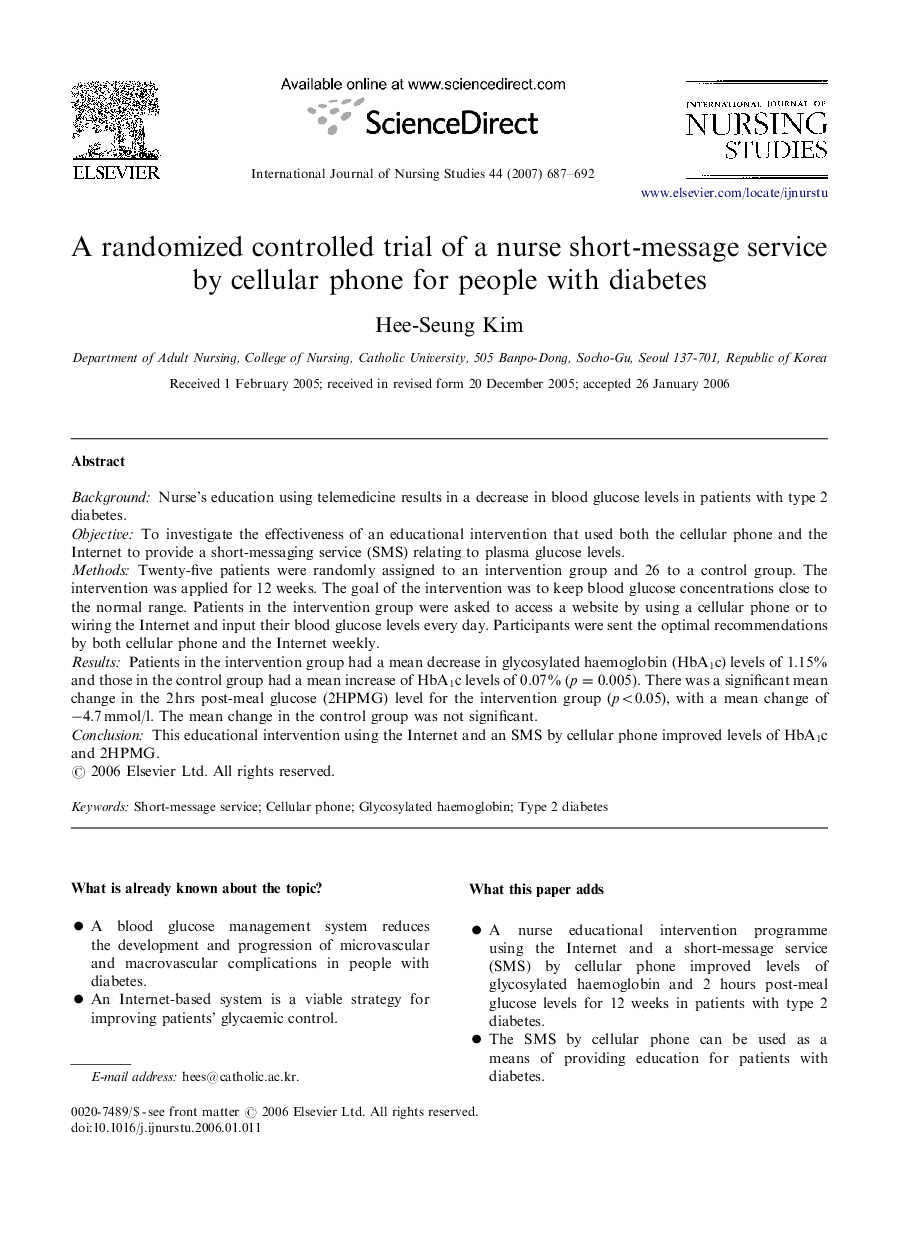| Article ID | Journal | Published Year | Pages | File Type |
|---|---|---|---|---|
| 1077437 | International Journal of Nursing Studies | 2007 | 6 Pages |
BackgroundNurse's education using telemedicine results in a decrease in blood glucose levels in patients with type 2 diabetes.ObjectiveTo investigate the effectiveness of an educational intervention that used both the cellular phone and the Internet to provide a short-messaging service (SMS) relating to plasma glucose levels.MethodsTwenty-five patients were randomly assigned to an intervention group and 26 to a control group. The intervention was applied for 12 weeks. The goal of the intervention was to keep blood glucose concentrations close to the normal range. Patients in the intervention group were asked to access a website by using a cellular phone or to wiring the Internet and input their blood glucose levels every day. Participants were sent the optimal recommendations by both cellular phone and the Internet weekly.ResultsPatients in the intervention group had a mean decrease in glycosylated haemoglobin (HbA1c) levels of 1.15% and those in the control group had a mean increase of HbA1c levels of 0.07% (p=0.005). There was a significant mean change in the 2 hrs post-meal glucose (2HPMG) level for the intervention group (p<0.05), with a mean change of −4.7 mmol/l. The mean change in the control group was not significant.ConclusionThis educational intervention using the Internet and an SMS by cellular phone improved levels of HbA1c and 2HPMG.
